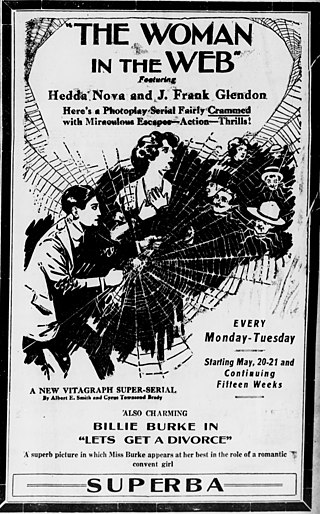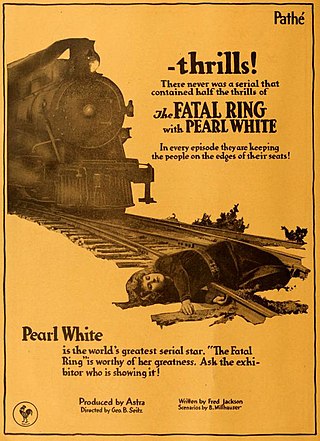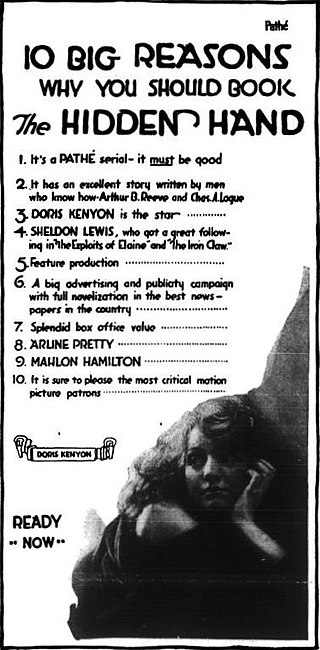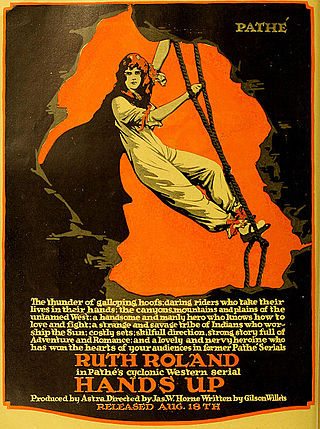
Rebecca of Sunnybrook Farm is a 1917 American silent comedy-drama film directed by Marshall Neilan based upon the 1903 novel of the same name by Kate Douglas Wiggin. This version is notable for having been adapted by famed female screenwriter Frances Marion. The film was made by the "Mary Pickford Company" and was an acclaimed box office hit. When the play premiered on Broadway in the 1910 theater season the part of Rebecca was played by Edith Taliaferro.
The Stranger is a 1918 American silent comedy film featuring Oliver Hardy. Prints of this film survive in private collections and it has been released on DVD.

Old Wives for New is a 1918 American silent drama film directed by Cecil B. DeMille. Prints of the film survive at the International Museum of Photography and Film at George Eastman House.

The Woman in the Web is a 1918 American drama film serial directed by Paul Hurst and David Smith. It was the 9th of 17 serials released by The Vitagraph Company of America. This World War I period serial about a Russian princess and the overthrow of the Tsar introduced the concept of the Red Menace to serials. The serial is now considered to be a lost film.

The Mystery Ship is a 1917 American adventure film serial directed by Harry Harvey and Henry MacRae. The film is considered to be lost.

The Brass Bullet is a 1918 American silent adventure film serial directed by Ben F. Wilson. It is now considered to be a lost film.

The Bull's Eye is a 1917 American film serial directed by James W. Horne. It is now considered to be a lost film.

The Fatal Ring is a 1917 American action film serial directed by George B. Seitz. Silentera.com reports that the UCLA Film and Television Archive may have a complete print.

The Hidden Hand is a 1917 American film serial directed by James Vincent. This is a lost serial.

Hands Up is a lost 1918 American adventure film serial directed by Louis J. Gasnier and James W. Horne. The serial was Ruth Roland's breakthrough role.

The House of Hate is a 1918 American film serial directed by George B. Seitz, produced when many early film studios in America's first motion picture industry were based in Fort Lee, New Jersey.

Which Woman? is a 1918 American silent drama film directed by Tod Browning and Harry A. Pollard. The film stars Ella Hall as a reluctant bride and Priscilla Dean as an adventuress and leader of a gang of thieves. The story was remade in 1923 as Nobody's Bride.

The Passing of the Third Floor Back is a 1935 British drama film directed by Berthold Viertel and starring Conrad Veidt, Anna Lee, Rene Ray and Frank Cellier. The film is based on a 1908 play by Jerome K. Jerome and depicts the various small-minded inhabitants of a building and ways they are affected by the arrival of a stranger who works to redeem them. The work had previously been adapted into a 1918 film version by Herbert Brenon. The film or play is referenced in Ngaio Marsh's 1941 novel, Death and the Dancing Footman.

Men was a 1918 American silent drama film directed by Perry N. Vekroff based upon a play by Harry Sophus Sheldon. It starred Anna Lehr, Charlotte Walker, and Robert Cain. It is considered to be a lost film.
The Bride's Awakening is a 1918 American silent drama film released by Universal Pictures and produced by their Bluebird production unit. Robert Z. Leonard directed the film and his then-wife Mae Murray was the star. A print of the film is housed at the EYE Institute Nederlands.

Heart of the Wilds is a lost 1918 American silent drama film directed by Marshall Neilan and starring Elsie Ferguson. The story is from "Pierre and His People", by Gilbert Parker, which Edgar Selwyn also based his play Pierre of the Plains on. Ferguson had become a star in 1908 in Selwyn's Broadway play.
Eve's Daughter is a 1918 American silent comedy-drama film produced by Famous Players–Lasky and distributed by Paramount Pictures. The film was directed by James Kirkwood and starred popular theatre star Billie Burke.

The Make-Believe Wife is a lost 1918 American silent comedy film starring Billie Burke and directed by John S. Robertson. Based on an original story for the screen, it was produced by Famous Players–Lasky and distributed by Paramount Pictures.

Unclaimed Goods is a 1918 American silent Western comedy film directed by Rollin S. Sturgeon and written by Gardner Hunting and Johnston McCulley. The film stars Vivian Martin, Harrison Ford, Casson Ferguson, George A. McDaniel, Dick La Reno, and George Kunkel. The film was released on April 14, 1918, by Paramount Pictures. It is not known whether the film currently survives.

Just a Woman is a lost 1918 American silent drama film directed by Julius Steger based on a Broadway play, Just a Woman, by Eugene Walter. The film starred Charlotte Walker, then wife of playwright Walter.


















